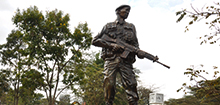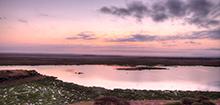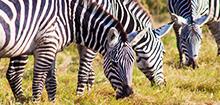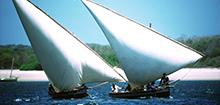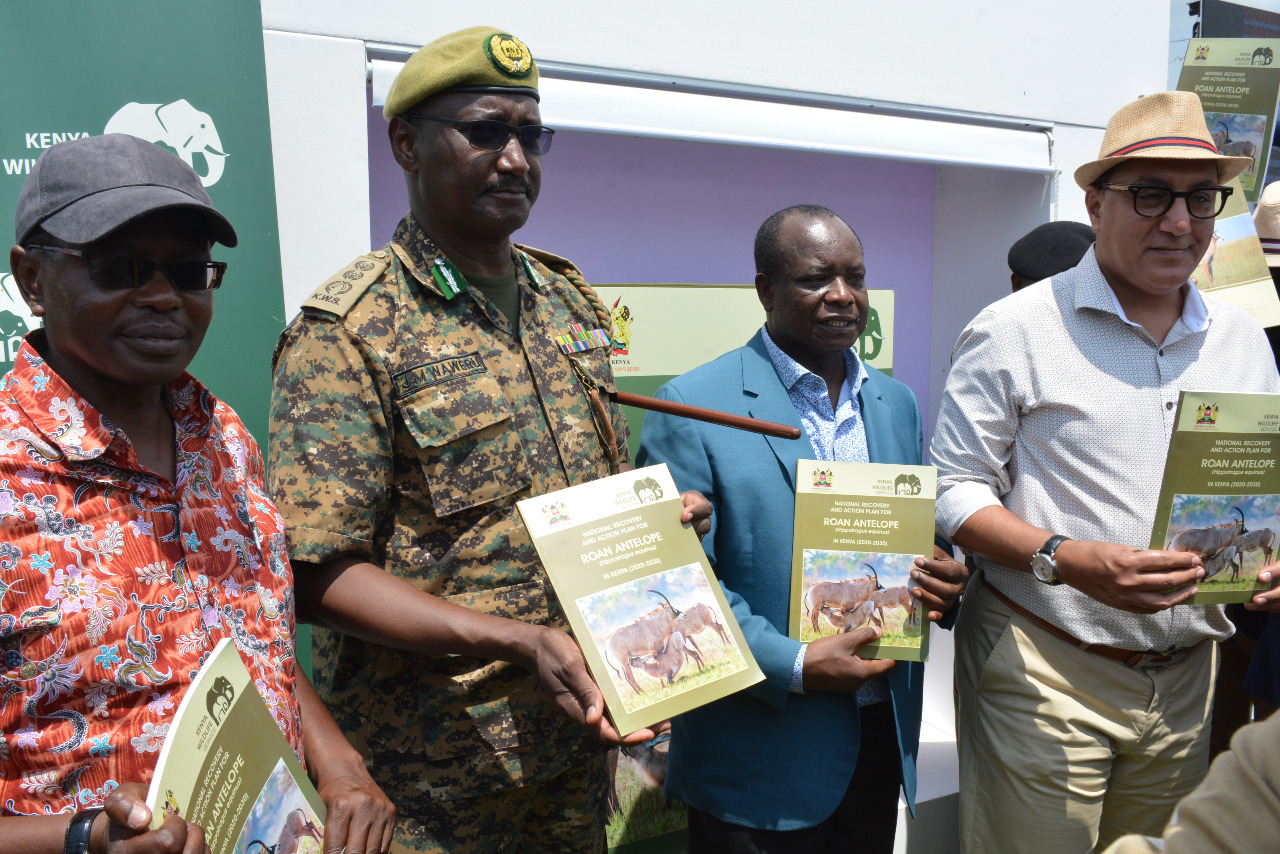
Date Published:
Kenya’s commemoration of World Wildlife Day (WWD) this year was a three-course event held in Ruma National Park in Homa Bay County.
The “appetizer” was an invigorating tree-planting activity, led by the Cabinet Secretary in the Ministry of Tourism and Wildlife, Hon. Najib Balala. The “main course” was celebration of WWD; this years’ theme being ‘Sustaining all life on Earth,’ which encompasses all wild animal and plant species as a component of biodiversity, as well as the livelihoods of people, especially those who live closest to nature. “Dessert” was the launch of the Recovery and Action Plan for the Roan Antelope (2020-2030).
Ruma National Park lies on the floor of the Lambwe Valley and is Kenya’s remaining sanctuary for the critically (nationally) endangered roan antelope. This antelope (Tragelaphus equinus) is named for its dominant body colour (a reddish brown) and is one of the largest species of antelope after Elands, Bongos and male Greater Kudu.
Addressing the mammoth crowd which turned up to commemorate WWD, the chief guest, Mr. Balala said the consensus by the National/County Governments, KWS and other stakeholders to hold the event in a less-prominent park like Ruma gave the celebration a special meaning. “Tourism in Kenya is not only about Masai Mara, Laikipia or Samburu, but also in Nyanza region, in ‘small’ parks like Ruma,” he said.
The CS said that the ambitious Action Plan aims for an increased roan population of 50 - up from a paltry 12 - individuals by 2023. He said there are other endangered species, such as the Grevy’s Zebra in Samburu, the Hirola in northern Kenya (400), Sable antelope in Kwale, Shimba Hills (56), Rothschild giraffe (625, of which 295 are in Ruma) and the rhino (1,414, of which 37 are in Ruma), although the day’s focus was on the roan antelope.
The CS lauded KWS team for their leadership and expertise in birthing the much-anticipated Recovery Plan. He further directed KWS to kick start the process (by July 2020) that would give incentives to potential investors to construct a world-class Lodge within Ruma National Park, to act as an attraction for larger visitor numbers, as well as the bonus of job creation for Nthiwa Constituency residents.
Mr. Balala cautioned the residents against retrogressive traditional beliefs which encourage rampant poaching of the roan, saying that any persons caught in the act of breaking the law as spelt out in the Wildlife Conservation and Management Act (WCMA) would face not less than five years imprisonment. He suggested a collaboration with the County government that would see the creation of a buffer zone to cushion Ruma and other KWS parks, from bush fires and encroachment.
In keeping with the day’s theme of sustaining all life on earth, Balala said that there was a planned program that would see KWS and the County government, as well as other teams, plant 5,000 trees in Ruma, and 200,000 countrywide. He granted local leaders and residents free entry to Ruma National Park over the coming weekend.
The CS admitted to having been questioned in Parliament about the perennial Tsetse fly menace in the Constituency. He explained that the deadly tsetse fly posed a threat to communities and wildlife, and pledged to collaborate with the Kenya Tsetse and Trypanosomiasis Eradication Council (KENNTECC) in their efforts to control and eradicate the scourge.
He acknowledged human-wildlife conflict (hippos along the lake shores) as an on-going concern which occupied one of the top rungs in his ministry’s agenda. Homa Bay County had 16 cases involving loss of life, compensation totaling 61 million shillings, and four injury cases worth 200,000 shillings.
The Governor of Homa Bay County Cyprian Awiti, expressed his gratitude at his county being chosen as the venue to commemorate the 2020 WWD. He stated that Ruma National Park’s profile would be lifted by the construction of a Five Star hotel within the park.
KWS Director General Brig. (Rtd.) John Waweru expressed his delight at the vigour with which WWD commemoration is growing annually. He said that the drastic decline in Roan populations and ranges (occasioned by habitat loss due to land-use change, poaching, predation, effects of climate change and frequent fires) was lamentable, because the roan is listed as critically endangered nationally.
He said that although the IUCN Red List categorizes the roan under ‘Least Concern’ due to its widespread distribution in Africa, the actual populations on the ground presented a major challenge for species population recovery on a national level. He urged for immediate intervention to avoid the forecast of local extinction of the species in the next five years.
The DG recognized the need for conservation approaches that integrate policy, biological, environmental and socio-economic considerations. “This is done while presenting incentives for local communities to realize recovery of the species, in Ruma National Park,” he said.
He thanked all partners, the County government of Homa Bay and other conservation-minded stakeholders, for walking with KWS on the road to fulfill her mandate.
The representative to the KWS Board of Trustees, Mr. Ian Craig, posed a challenge to those of his generation in attendance: “leave a legacy of failure after losing Kenya’s roan to extinction or succeeding by saving it”. He stressed that the BoT could not accomplish much on its own saying that while the management in KWS is the best in Africa in wildlife management, it still needs international, national and county support.
Other guests who graced the occasion included Homa Bay Deputy Governor Hamilton Orata; Senator Moses Kajwang; The Chief Administrative Secretary Ministry of Tourism and Wildlife, Mr. Joseph Boinnet; The Principal Secretary, State Department of Wildlife, Prof.. Fred Segor; The County Commissioner, Members of Parliament for Nthiwa and Homa Bay, Women Representative for Homa Bay, Members of the County Assembly, Members of the County Executive Committee, representatives of KWS Board of Trustees, conservation partners and tourism stakeholders.

